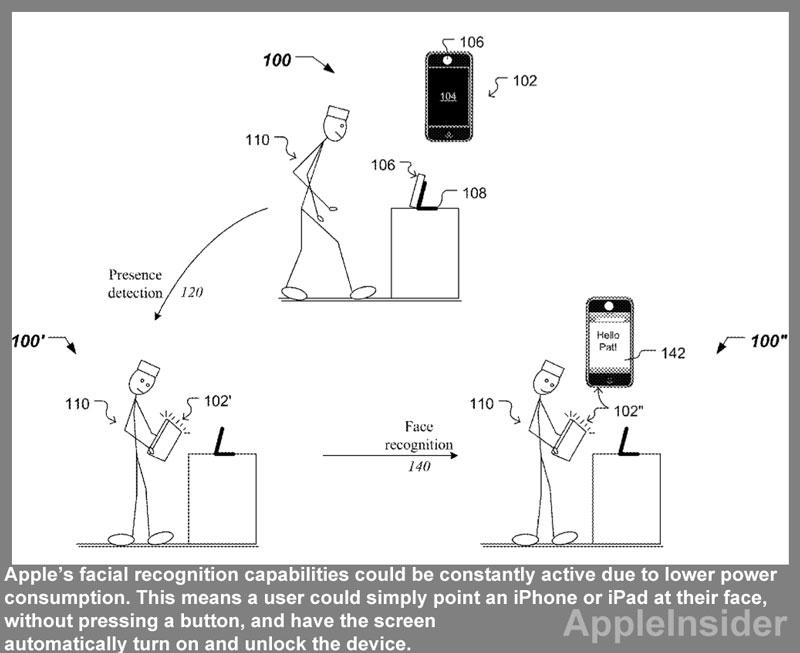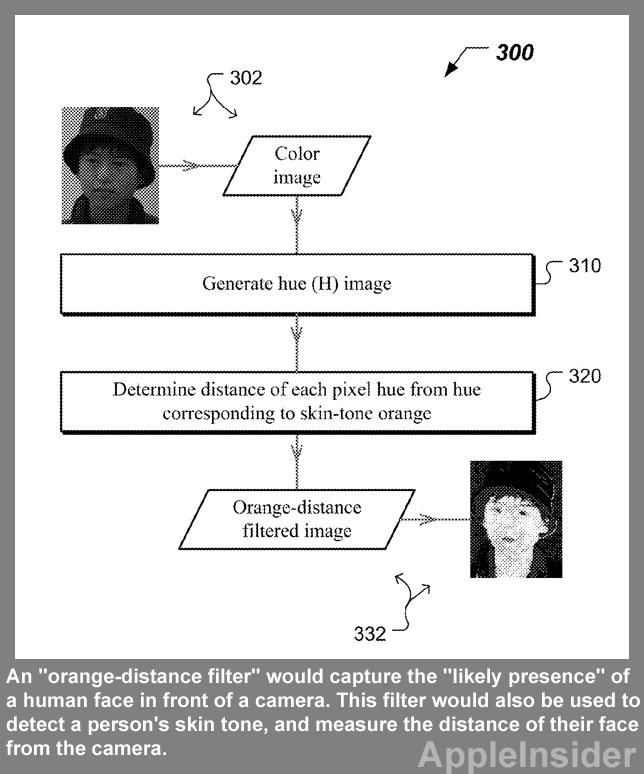Apple's future iPhones & iPads could automatically personalize via face recognition
Apple's concept was revealed in a new patent application published this week by the U.S. Patent and Trademark Office and discovered by AppleInsider. Entitled "Low Threshold Face Recognition," it describes a low-computation solution for quickly and accurately recognizing a user.
The filing provides a simple way for multiple users to share a single device, like an iPad. Each user could customize their personal profile with unique wallpaper, applications and settings, and that profile would be immediately accessed once the iPad recognizes a user's face.
Apple's application notes that robust facial recognition systems that work in various lighting conditions and orientations can be taxing on an electronic device, requiring resources and draining battery life.
Its solution would reduce the impact of lighting conditions and biometric distortions on an image. The filing describes a "low-computation solution for reasonably effective (low threshold) face recognition that can be implemented on camera-equipped consumer portable appliances."
Rather than aggressively analyzing a user's entire face and using up time and resources, Apple's concept would rely on a "high information portion" of a human face. Potential high information portions could include eyes, a mouth, or the tip of a user's nose.
By recognizing the individual features on a user's face, the system could scale the distance between someone's eyes and their mouth. That distance could then be measured against the reference image originally captured by the user in order to confirm it is in fact the same person.
Apple's application notes that its facial recognition capabilities could be constantly active due to lower power consumption. This means a user could simply point an iPhone or iPad at their face, without pressing a button, and have the screen automatically turn on and unlock the device.
This could be accomplished through an "orange-distance filter," which would capture the "likely presence" of a human face in front of a camera. This filter would also be used to detect a person's skin tone, and measure the distance of their face from the camera.
Once a user has been recognized, the facial recognition technology could not only grant them access to the device, but also customize its settings based on a unique user profile. Each user would be presented with a personalized configuration, as an iPhone or iPad would be able to "modify screen saver slide shows or other appliance non-security preferences," the application reads.
The proposed invention, made public this week, was first filed by Apple in June of 2009. It is credited to Robert Mikio Free.
Apple was rumored in September of 2010 to have acquired a Swedish facial recognition company, Polar Rose, for $29 million. One of the company's products, Recognizr, could take a photo of a user and recognize that same person when shown on video.
Reports have indicated that Apple has long shown interest in having its devices identify users with facial recognition technology and customize a device based on their personal preferences. In early 2010, before the iPad was announced, The Wall Street Journal revealed that an early prototype of Apple's touchscreen tablet would use a forward-facing camera to recognize users' faces, allowing it to be one device easily shared by the entire family.
Apple reportedly experimented with the ability to customize the device, and have it automatically switch to a user's personal settings once they picked it up. One early feature included virtual "sticky notes" that one user could leave for another, and would be read the next time they picked up the iPad.
 Neil Hughes
Neil Hughes












 Mike Wuerthele
Mike Wuerthele
 Malcolm Owen
Malcolm Owen
 Chip Loder
Chip Loder

 William Gallagher
William Gallagher
 Christine McKee
Christine McKee
 Michael Stroup
Michael Stroup
 William Gallagher and Mike Wuerthele
William Gallagher and Mike Wuerthele







